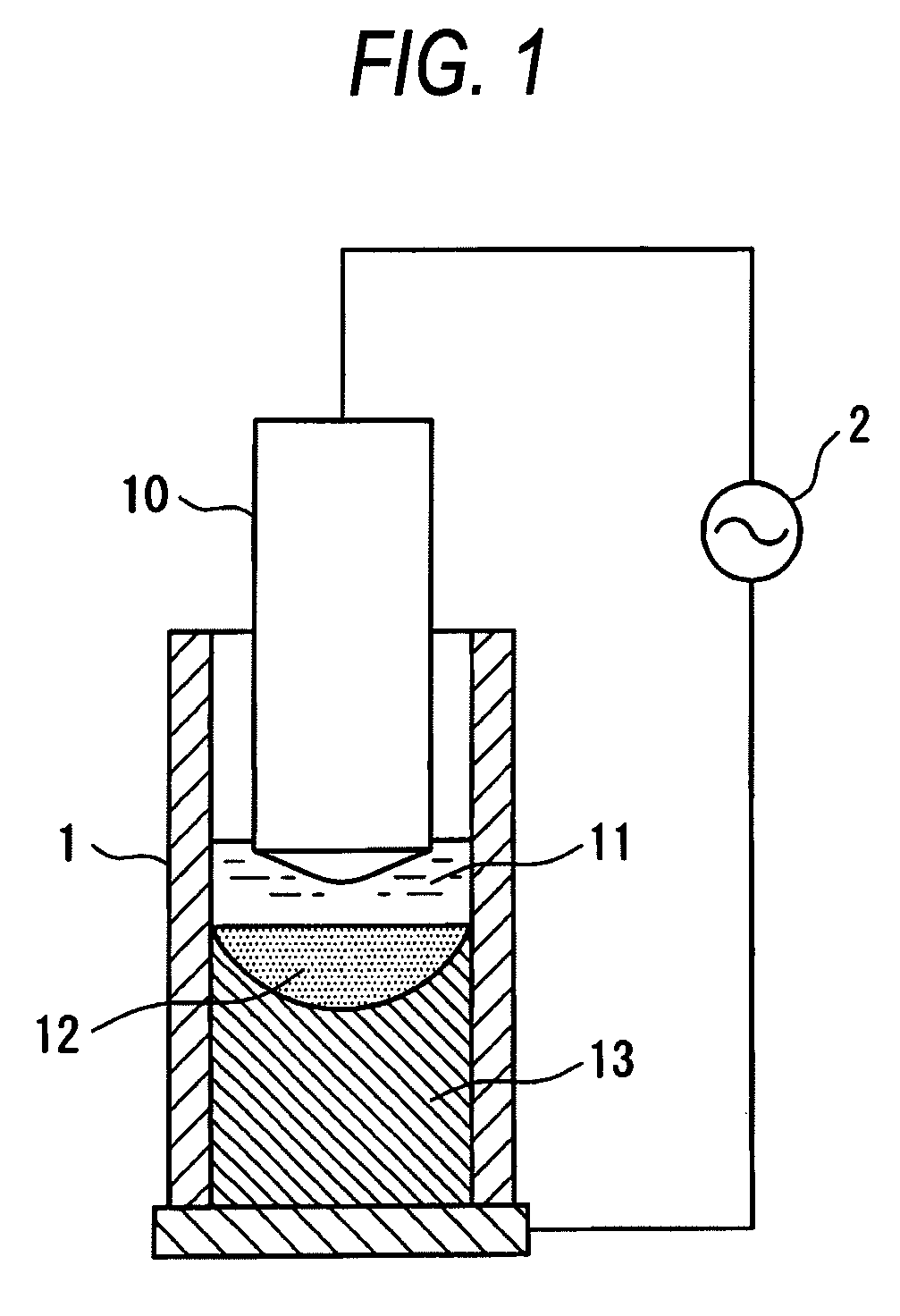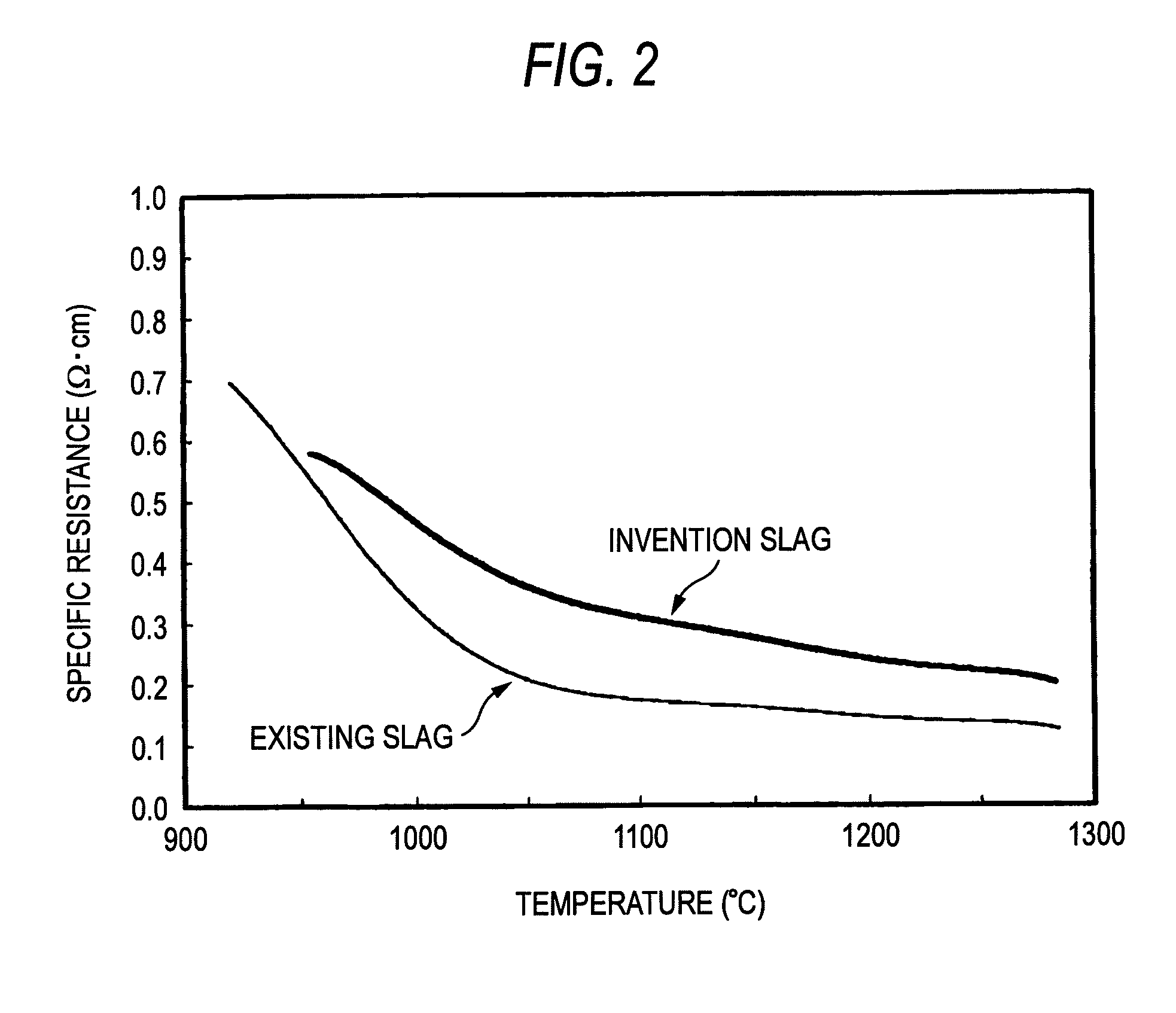Slag for electroslag remelting for copper alloy and method for producing copper alloy material
a technology of electroslag remelting and copper alloy, which is applied in the direction of blast furnace details, metal-working equipment, blast furnaces, etc., can solve the problems of lower intergranular strength, higher thermal conductivity of alloy, and lower intergranular strength, so as to achieve good internal properties and good casting surface
- Summary
- Abstract
- Description
- Claims
- Application Information
AI Technical Summary
Benefits of technology
Problems solved by technology
Method used
Image
Examples
examples
[0054]Examples of the invention will be described below.
[0055]A slag of the invention containing CaF2: 25%, CaO: 25%, SiO2: 25%, LiF: 15%, ZrO2: 10%, and others: at most 1% in total; and a slag containing CaF2: 70%, LiF: 20%, and Al2O3: 10%, as shown in Patent Reference 1 (hereinafter this is referred to as an existing slag) were prepared, and their specific resistance and viscosity were measured.
[0056]FIG. 2 shows the results of specific resistance measurement. The invention slag has a specific resistance of from 0.1 to 0.7Ω·cm at 1000° C. or higher, as intended.
[0057]FIG. 3 shows the results of viscosity measurement. The invention slag has a viscosity of at most 1 poise at 1000° C. or higher, as intended; however, the existing slag has a high viscosity in the temperature range around 1000° C.
[0058]The viscosity was measured according to the method mentioned below. FIG. 8 shows an outline of an oscillating viscometer. In the oscillating viscometer, when a thin vibrating element is ...
PUM
| Property | Measurement | Unit |
|---|---|---|
| viscosity | aaaaa | aaaaa |
| melting point | aaaaa | aaaaa |
| melting point | aaaaa | aaaaa |
Abstract
Description
Claims
Application Information
 Login to View More
Login to View More - R&D
- Intellectual Property
- Life Sciences
- Materials
- Tech Scout
- Unparalleled Data Quality
- Higher Quality Content
- 60% Fewer Hallucinations
Browse by: Latest US Patents, China's latest patents, Technical Efficacy Thesaurus, Application Domain, Technology Topic, Popular Technical Reports.
© 2025 PatSnap. All rights reserved.Legal|Privacy policy|Modern Slavery Act Transparency Statement|Sitemap|About US| Contact US: help@patsnap.com



